The bow of the north is small annual lows, obtained by growing them from seeds. Onions - popular vegetable culture of many countries of the world. It is grown by ancient times, used in cooking, in folk medicine. You can grow this culture both on the outdoor soil and on the windowsill of your dwelling.
Content |
When landing onion, we get a more resistant plant, less demanding to care, to the choice of soil, the bow becomes rising to disease and pests, ripens faster. Observing the main, universal landing and care rules, you can get a rich harvest of this indispensable vegetable culture.
Onions of the Sevkov - Description and Sort
The onions of the seeds are small bulbs grown from seeds in the first year, a diameter of 1.5 to 2.5 cm. In our climate, the cultivation of Luke is a biennial. The seed landing "Chernushka" occurs in the spring, in the first year small lows are grown on them, they are collected by autumn for storage, and already the next year in the spring planted them in their plot. And by the autumn of Luke, the sevka mature large, suitable for long-term storage of the bulbs. This method is very common for the middle and northern strips of our country, it allows you to achieve earlier crop maturation and larger size of the bulbs themselves.
There is a large variety of Luka varieties Sevka. The amount of and quality of your crop depends on the quality of the use of planting materials (seeds, bulbs). You can easily plan the time of growing onions and the harvest period of harvest, choose the seaw, suitable according to your individual requirements and desires.
The main popular seeds for the cultivation of Luca-Sevka:
- Bessonovsky variety is an old grade of Luke Penza region. Quickly maturing, has a large yield, good fierce, is stored without any problems and transported. A sharp taste, bulb round-flat species, weighing up to 50-60 gr., White inside. The scales of yellow shades with an admixture of purple. Gives from 3 to 6 bulbs in the nest.
- Strigunovsky variety - led in the Belgorod region. It is possible to grow from seed to a full-fledged bulb in one season. The raven, has a great yield, good fierce. A sharp, bulbs round, small sizes, weighing about 45-80 gr., Dense and strong, white inside. Cache dry light, yellow shades. Gives up to 2 bulbs in the nest.
- Timiryazevsky - raking, has a great yield, good fierce, is stored without problems. A sharp taste, bulb round-flat species, dense, strong, inside white. Light flakes, brown shades. Gives from 1 to 3 bulbs in the nest.
- Danilovsky 301 varieties - it is possible to grow from a seed to a full-fledged bulb for one season. The medieval, has a great yield, good fierce. Pointed taste, bulbs round-flat species, weighing up to 70-100 gr., Light purple inside. Scales of violet shades. Gives 1-2 bulbs in the nest.
- Assemary grade is possible, it is possible to grow from seed to a full-fledged bulb in one season. Quickly maturing, does not have problems when stored, has good fierce. Acute taste, rounded form of bulbs, medium size, up to 60 grams. Golden flakes.
- Rostov grader - led in the Yaroslavl region. Quickly maturing, has a large yield, good fierce, is stored without any problems. A sharp taste, bulb round-flat species. Gives up to 4-5 bulbs in the nest.
- Carmen variety-medieval, has a great yield, good fierce. Pointed taste, medium density bulbs, round-flat species, weighing 100-120 gr. Scales of reddish-purple shades. From 1 square Meter planting harvesting up to 5 kg. Gives from 1 to 5 bulbs in the nest.
- Stuttgarten Rizen Grade - It is possible to grow from a seed to a full-fledged bulb in one season when sowing. Medieval, with great yield, good fierce, has no problems when stored. Bulb round-flat species, weighing 50-100 gr, dense and strong. Scales of yellowish brown shades.
There are still many species of Luka Sevka adapted to the characteristics of the climate and soil of various regions of the country.
Growing onion Seeds from seeds
Landing, sowing
To get a good crop, you can grow in advance the onion of the north of the seeds. First you need to choose a place to sow "Chernushka". The most favorable place for growing Sevka will be a garden, on which the cucumbers, cabbage, tomatoes or potatoes grown. Seeds from seed can be grown on one bed along with the naval bulbies. To reduce pest attacks and minimize the infection of Luke Diseases, it is not necessary to plant it at the same place for 3-4 years. The land must "relax".
It is recommended to choose a place for sowing on the sunny side of the site, with fertile land. It must be cleaned of weeds, switch. The soil fertility and its fertilizer need to pay special attention, in its nature the root system of future sprouts will take power from the soil, the growth and development of the plant depends entirely on these factors. In advance, in the fall, it is necessary to make a reworked manure, compost, potash and phosphoric fertilizers (30-40 grams per square meter). Fresh manure is categorically contraindicated, because It contributes to an increase in nitrogen in the second half of the plant growth, which leads to stimulation of the growth of the pen, and not the bulbs. In the case of excessive soil acidity - we need to process lime. In the spring, before planting to make an ammonary Selitra in the soil (20-25 gr. Per square meter).
Luke swaying time - the end of April, the very beginning of May. After the melting of snow, when the threat of frosts, and the Earth will warm up the sun, it is necessary to prepare seeds to sow. Within 24 hours (or before the appearance of sprouts from seeds), they are soaked in water or in wet tissue. Nobuh seeds faster give germs, better germinate. After, the seeds leave in the shade for drying. Next, they need to be treated with means against cervical rot and onion flies.
Place for landing, prepared and fertilized from autumn, carefully loosen. The ground is loose and slightly rolling. In the ground make grooves up to 2 cm deep. Water with water. The distance between rows from 8 to 30 cm.
Sowing seeds are made at a distance from 0.5 to 2 cm from each other (consumption per quarter. Meter - 8-10 gr. Seeds). Thus, as they grow and developed, the plants do not interfere with each other. More frequent sowing will require thinning. And the more rare - will lead to the formation of larger bulbs, not suitable for landing for the next year. When landing such larger bulbs in the new season, the growth of the plant will not be in the bulb, but in the arrows. Having finished sowing seeds, you should make mulching peat or humus, cover the place of sowing with a film to protect the bow-north of cold and sudden frosts.
Caring for sowing
To care for sowing will not be much effort. Weedly weeds must be gone, it is done carefully, so as not to damage the root system of plants. It is necessary to regularly loose the soil to a depth of about 5 cm and water. It is especially important to buy, loosening and watering in the first half of the plant growth, during the growing season, for the full formation and growth of leaves. Finish watering you need 1 month before harvesting. With a rich fertility of the soil, the feeding is not needed. If the plant develops badly, you can make feeding, but before the bulb began to form. Feeding a nitrogen fertilizer of 10 gr. on square. meter. If you continue nitrogen feeding and watering in the second half of growth, it will provoke a delay in the ripening of the bulbs. During the season, phosphoric fertilizers can be made, potash fertilizers from the middle of the vegetation. In the second phase of growth, the main care is to combat weeds.
For the prevention of onion mug attacks (usually, this is the time of flowering dandelions), the powder of the Earth is needed by a mixture of equal parts of tobacco and membranes, or a mixture of naphthalene and sand, in proportions 1:20. Spraying sheets of carbofosomes also helps in prophylaxis.
Cleaning of Luke Seeds from seeds
Onion's readiness signal Sevka to cleaning - left leaves, the feather became yellow, the dry, yellow peel appeared on a well-formed bulb. Usually maturation sevka occurs since the end of July at the beginning of August. If the season was rainy, it is better to remove the seaw, without waiting for his full ripening. Thus, avoids the formation of a new root of the roots at the bulb leading to bad fierce and storage. Sevov dig into dry weather, dried on the garden. On average, the collection from 1 meter landing is about 1 kg of bow. After drying in the attic or under a canopy, where there is no humidity there, and a good blowing by air flows. Sevov periodically turn over and agitate, so as not to be rejected by the lows. When the leaves dry out completely, having transferred their nutrients with a bulb, they are cut. You should not remove the seaws from the bed in the rain or trim the fresh feathers immediately. This increases the risk of ray infection with diseases. Full drying of Luka Sevka passes within 2-3 weeks.
After the bulboys sort the size: small, medium, large. The standard average is considered to be segue size: from 1.5 to 2.5 cm in diameter for the cube form, from 1.5 to 2.2 cm in diameter for a rounded-flat and rounded form. He is the most yield for landing next season. Small north gives a smaller yield. Large north of more than 3 cm in diameter - samples. Most often it is planted for an extraction, to get a pen. Sorted dry suggests are removed for storage in a closed room. Frequently used for storage Capron. Clean the onions in the Kapron, suspend in a dry room temperature from 18 to 22 degrees Celsius. You can store seeds with a slide. In order to avoid drops of temperatures, can be covered with straw. To count the area under the planting of the bulbs, the Sevka next year, you need to multiply the landing area of \u200b\u200bseeds from about 6-8 times.
Growing onion Sevka for the second year
Lowing onion Sevka spring
Landing is held from the middle or end of April. The temperature of the soil should be at least 12 degrees Celsius. The bulbs have good frost resistance, the cold is not terrible. As for the sowing of Luke, Sevka, and to plant the bulbs, it is necessary to choose and prepare a place. Onions - a light-affilome plant, it is better to choose the sunny side of the site, with good air flows. The presence of groundwater is not desirable. The best place for Luke Sevka is a garden, where cabbage, beans, cucumbers, zucchini or tomatoes were grown in the past. Unwanted predecessors are carrots, garlic. Only after 4-6 years you can land onions after these crops. In the areas where the bow of the Sevkov was grown in the past, over the next 3-4 years, landing is not recommended. Suglinted, alkaline soil, with an admixture of sand, well preserving moisture is the most successful option for landing onion Sevka. If the soil is acidic, severe, then it is necessary to lime the soil, make fertilizers in the form of dolomite flour, lime, wood ash, ground chalk or ground limestone. It is important not to make simultaneously lime and manure. When connecting these components, the% nitrogen is reduced in fertilizer. When making manure, it is recommended to choose any other alternative lime to reducing the soil acidity. If the landing of a bow on the pasture of the pen, the organic fertilizers will help in the rapid formation of greenery. For the cultivation of full-fledged bulbs for long-term storage, the organizing agent is undesirable.
A place for landing is prepared from autumn: the land is purified from weeds, dripped, fertilize, make peat-null compost, reworked manure. In the spring, in front of the planting of the bulbs, organic fertilizers (chicken litter, humid) are contraindicated. Organizer provokes the growth of the pen, not the formation of a bulb. Also before planting in the spring, the soil resistance is carried out, making mineral fertilizers. 7 days before the planting of the bulbs in the ground, we can process the area with a solution with a solution of water and copper mood, in the proportions of 10 liters per 1 tf. spoon.
Before boarding, careful selection of planting material is carried out. From the quality of the bulbs largely depends on the yield of the bow. Lukovitsa with grinding formations, faded, with the processes, deformed for landing are unsuitable. At first, the bow is heated for 15-20 days at a temperature of about 20 degrees Celsius. After, healthy, strong (spring or winter) planting material is warmed over 7 hours at a temperature of +35 degrees Celsius. This procedure reduces the risk of shooting the arrows in the future, and also helps the formation of the kidneys. Warming on the bulbs before planting increases the resistance of the plant to disease, makes it more resistant to pest attacks. After warming up the bulbs are placed in a dry, warm room.
Before boarding the earth, the bulbs can be treated with a growth stimulant, it is also desirable to put for 25 minutes into a solution (1%) of the copper mood. This procedure disinfects the bulbs, helps to strengthen the protection of the plant from rotting. Alternatively, you can carefully treat bulbs with boiling water or soak them in a weak solution of manganese. It is worth noting that the improper treatment of boiling water can lead to the ignition of the root system of the bulbs, to the problems of its development and growth. Without waiting for drying of bulbs after processing, they are placed in the ground.
The landing site loose, align, slightly roll. Groans are made at a depth of 2-4 cm, the width between them is about 20-25 cm. When the bulbs is up to 1 cm in diameter, the distance between the bulbs in planting 5 cm. When the bulbs is up to 1.5 cm in diameter, the distance Between the bulbs in landing 8 cm. When the bulbs is up to 2 cm in diameter and more, the required distance between the bulbs in landing is 10 cm and more. Salting seawood into the ground, it is undesirable to heal a bully in the ground, the upper part of the head should stick out of the ground. With deep immersion in the soil, the bulb can take an extended form. With a very small immersion - there is a risk of deforming the bulbs, due to the on-line root system, it will simply be pushed into a surface. After disembarking, mulching sawdust, peat. You can cover the film before the appearance of sprouts.
Lowing onion Sevka autumn
Luca-Sevka landing in autumn is the possibility of obtaining an early harvest. For the landing of winter onion-sevka, it is better to use special varieties (for example, Carmen, Strigunovsky, Danilovsky). First, the sample of the smallest bulbs sevka is held. An important point - the neck of the bulWhi does not cut off. Grocery must be warmed in advance. A grooves are made at a depth of 4 to 5 cm. The bulbs are planted. Earth is sprinkled.
To obtain an early breeze crop on the pen, a selection of the largest bulbs is carried out, planted on a warmed bed with frequent rows. Earth is sprinkled.
Oscom
If the garden was specifically prepared in advance and fertilized under the bow of the navigation, then the main care after the spring landing lies in the moay of the soil, in systemic irrigation and in the conduct of several feeding. After the feathers become about 10 cm in length, it is possible to start weeding weeds, soil loosening. Such a later intervention will retain lows from injury and deformation. Watering in May-June is carried out once every 7 days. After watering reduce. And 30 days before the harvest, approximately in July, it is completely stopped. The soil loosening throughout the season is an important aspect in the cultivation of onions, it is impossible to allow the appearance of soil crust. The removal of weeds should be timely when they are small. High-quality assfill will not allow strain and obstacles in the development of bulbs due to the root systems of weeds. When the feathers reached 10-12 cm, it is necessary to walk between the rows, to break the soil, make the grooves between rows. It is then carried out the first feeding to any liquid nitric fertilizer, organic or inorganic, bring it into the grooves. After equal. A few weeks later conduct the second feeding chloride chloride in liquid form, it contributes to the development and formation of bulbs. During this period, the plant is needed good watering. When the bulbs begin to form, it is possible to start gradually to move the land from them. So they will start rapidly and falling down. If arrows appeared on Luka, they need to be removed after the bloated thickening was formed inside on the bottom of the arrow.
Care Tips:
- If the pale feathers, the plant lack nitrogen.
- If feathers of grayish shades, the plant lacks the potassium.
- If the feathers are black and dry, the plant lack phosphorus.
Cleaning Luke Sevka
The cleaning of the onion is carried out after the yellowing of the pen when the leaves were locked and crushed. Caring for the soil (watering and feeding) and onions are stopped a month before harvesting. Dry soil contributes to the aging heads. In the absence of rains, the onions begins to ripen in early August. It is advisable to choose a dry day for cleaning. If the summer was rainy, it is recommended to remove onions in the middle of August, without waiting for its full formation. Thus, preventing bulbs. Harvesting should be carefully taken carefully, so as not to scratch the bulbs.
To begin with, you can dry onions on the beds 3-7 days, after transporting it to dry on an open, solar section, well ventilated by air, the desired temperature of 25-35 degrees Celsius. It is necessary to avoid moisture and water in the bulbs. When drying the bulbs for 10 days, it is necessary to remove the burst flakes, dry roots, cut the dried feathers, leaving the "pencil" neck length from 3 to 5 cm. After drying, the harvest is stored in a dry place in the package with ventilation holes (for example, boxes).
Vintage onion with 1 square. meter - 2-3 kg.
Diseases and pests of Luka Sevka
Luke pests Sevka-Love Much, root tick, tobacco trips, stalk nematode.
Luka Diseases Sevka - Mosaic, Gray Rota, Peronosporosis, horse rot.
It is not recommended to use chemicals in the onion fertilizer, organic fertilizers (urea, manure, compost, bird litter) are welcomed. Natural organic fertilizers contribute to the resistance of the plant to disease. While mineral fertilizers, due to the effect on the exchange of onions, form a medium that attracts its pests. To activate and stimulate growth, it is better not to use chemicals that are favorable by the use of natural infusion from nettle. Nitric bait should be observed strictly in recommended doses, so as not to harm the plant. Moderate use of potash and phosphate fertilizers strengthen the endurance of the plant to pest attacks and diseases.
Showing proper attention and necessary care for the plant, this culture will delight you by the amount and quality of the harvest.

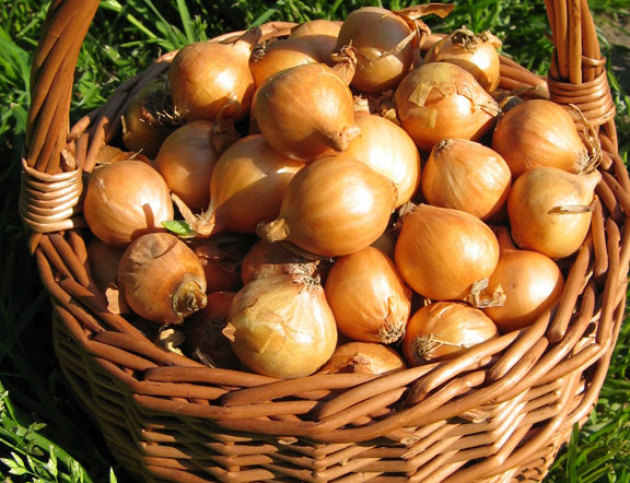
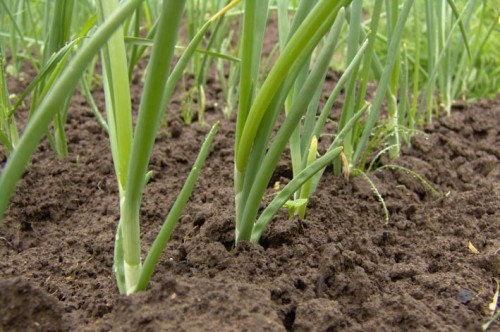
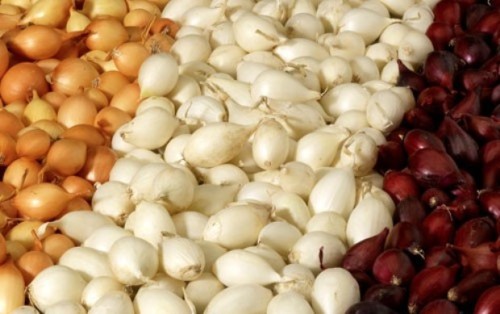
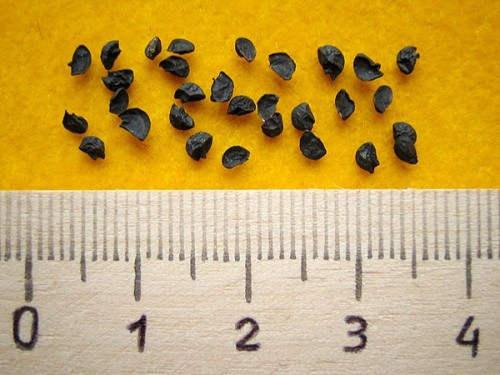
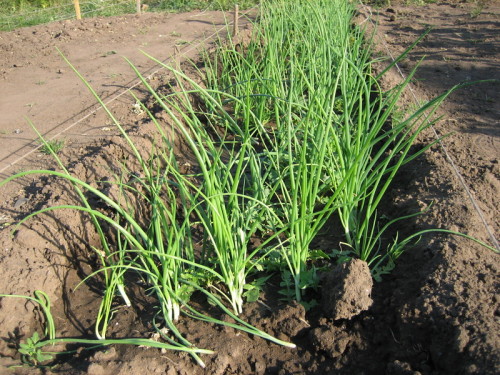
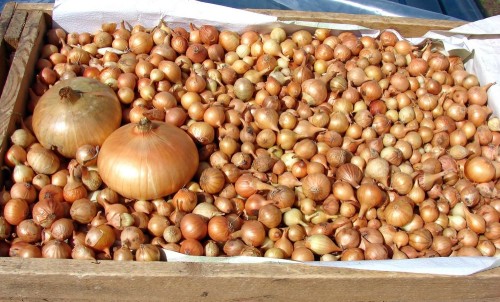
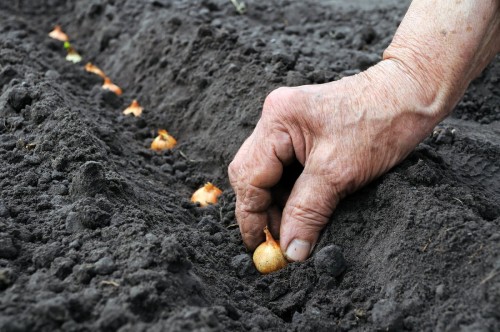
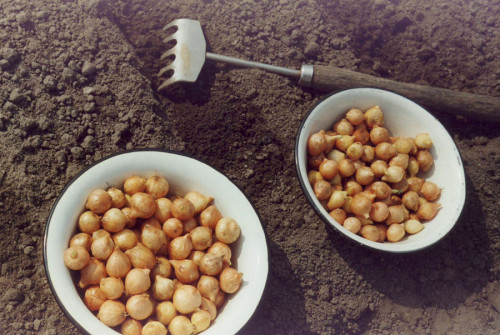
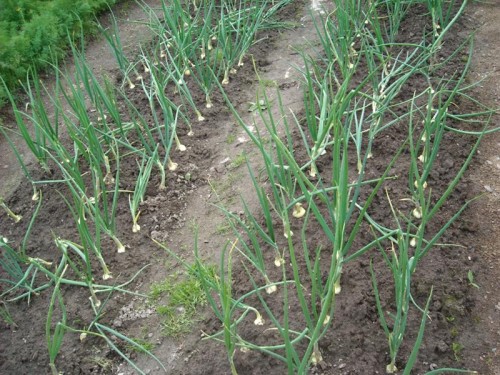
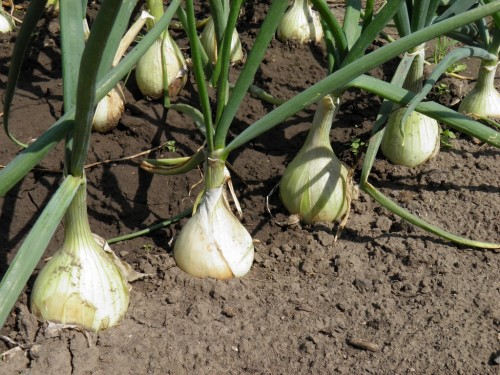
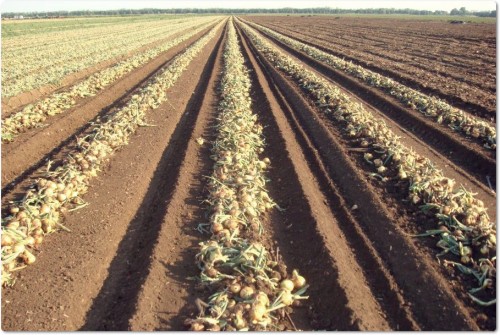
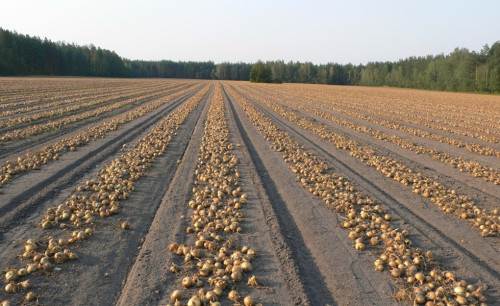
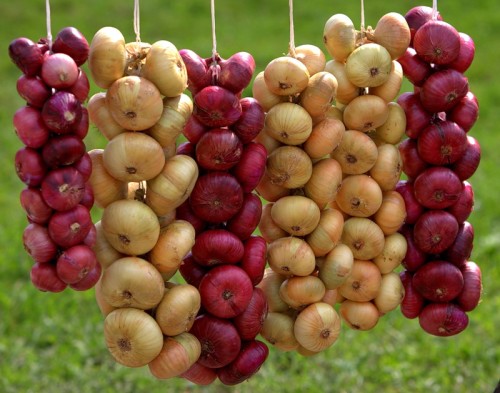
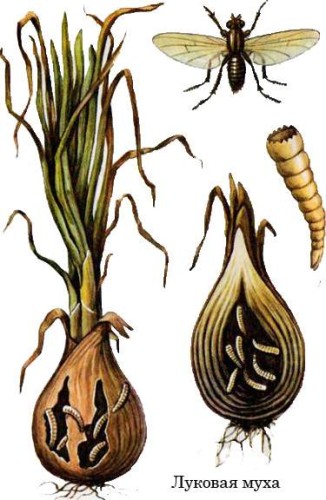

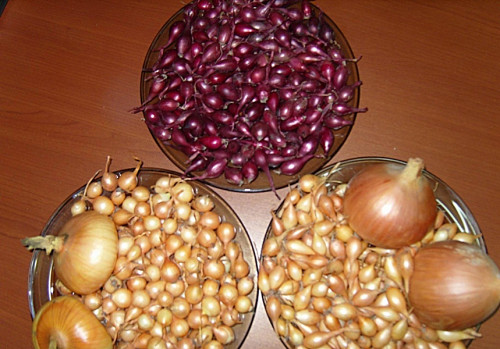












 Start a discussion ...
Start a discussion ...